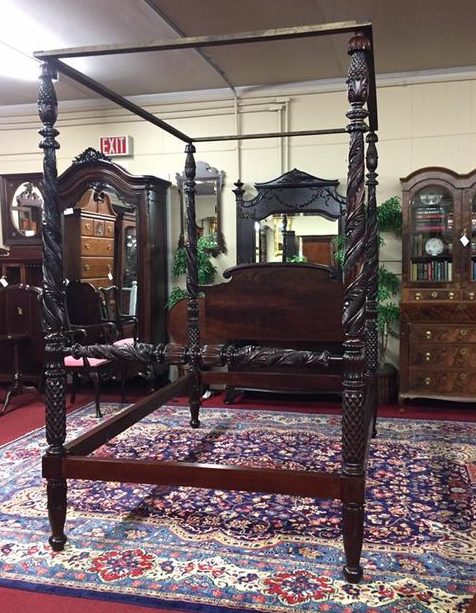
Antique beds are a popular choice for homeowners looking to add a touch of elegance and nostalgia to their bedrooms. These unique pieces of furniture come in different styles and designs that reflect different periods in history. However, one of the challenges of buying an antique bed is figuring out the size that will fit your space and needs.
Unlike modern beds that have standard sizes, antique beds follow a different set of sizing conventions. In this guide, we will explore the common antique bed sizes and how to measure them to make an informed decision when buying.
1. Understanding Antique Bed Sizes
Antique beds come in various sizes that can be grouped into two categories: standard sizes and custom sizes. Standard sizes are those that were commonly used in the past and are still available in some antique shops. Custom sizes, on the other hand, were made to fit specific spaces or needs and are usually rare.
In general, antique bed sizes can be classified as single, double, queen, and king. However, these sizes may differ from modern standards, and it is essential to measure them correctly to avoid buying the wrong size.
2. Single Beds
Single beds, also known as twin beds, are the smallest antique bed size and the most common size for children’s bedrooms. They were widely used in the late 19th and early 20th centuries and measured around 39 inches wide and 75 inches long. However, some antique single beds may be shorter, measuring around 72 inches long.
If you are buying an antique single bed for a child’s room, make sure to measure the space to ensure that it will fit. Also, keep in mind that children’s beds often have lower headboards and footboards than adult beds, which may affect the overall look and feel of the room.
3. Double Beds
Double beds, also called full beds, were prevalent in the 19th and 20th centuries and were a popular choice for couples who wanted to share a bed. They measure around 54 inches wide and 75 inches long, which is slightly narrower and shorter than modern full beds.
When buying an antique double bed, it is essential to measure the space and consider the height of the headboard and footboard. Some antique double beds have tall headboards and footboards, which may take up more vertical space than modern beds.
4. Queen Beds
Queen beds were first introduced in the 1950s and quickly became a popular choice for couples who wanted more space. They measure around 60 inches wide and 80 inches long, which is the same as modern queen beds. However, some antique queen beds may be shorter or narrower, so it is essential to measure them correctly.
Antique queen beds come in different styles and designs, such as sleigh beds, four-poster beds, and canopy beds. These unique designs add a touch of elegance and sophistication to any bedroom.
5. King Beds
King beds, also known as Eastern King beds, were first introduced in the 1960s and are the largest antique bed size. They measure around 76 inches wide and 80 inches long, which is the same as modern king beds. However, some antique king beds may be narrower or shorter, depending on the design and style.
Antique king beds come in different styles and designs, such as platform beds, four-poster beds, and canopy beds. They are a popular choice for master bedrooms and add a touch of luxury and opulence to any space.
6. Measuring Antique Beds
Measuring antique beds can be tricky since they often have unique designs and measurements that differ from modern standards. Here are some tips to help you measure an antique bed correctly:
– Start by measuring the width and length of the mattress or bed frame. This will give you an idea of the overall size of the bed.
– Measure the height of the headboard and footboard to ensure that they will fit in your space.
– Consider the clearance space around the bed to ensure that you have enough room to move around and access the bed.
– If buying a custom-sized antique bed, measure the space where you plan to put it and ensure that it will fit without obstructing other furniture or items.
7. Conclusion
Antique beds are unique pieces of furniture that add character and charm to any bedroom. However, buying an antique bed can be challenging, especially when it comes to choosing the right size. By understanding the common antique bed sizes and how to measure them correctly, you can find the perfect bed that fits your space and needs.
Whether you opt for a twin bed or a king bed, antique beds come in different styles and designs that reflect different periods.
